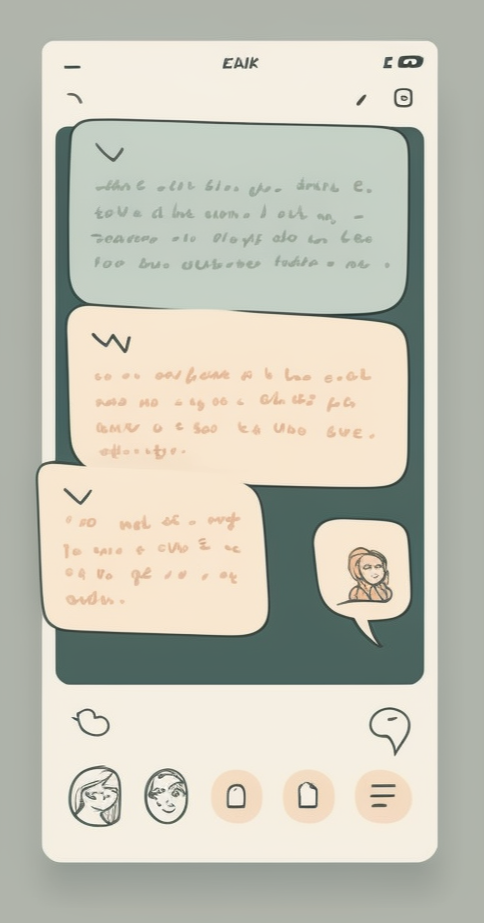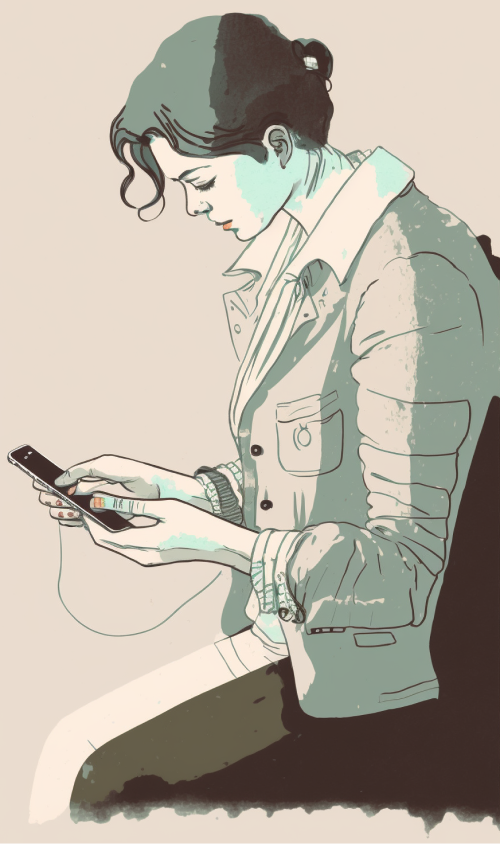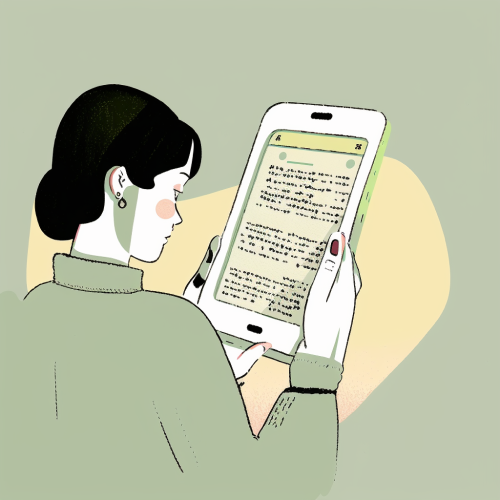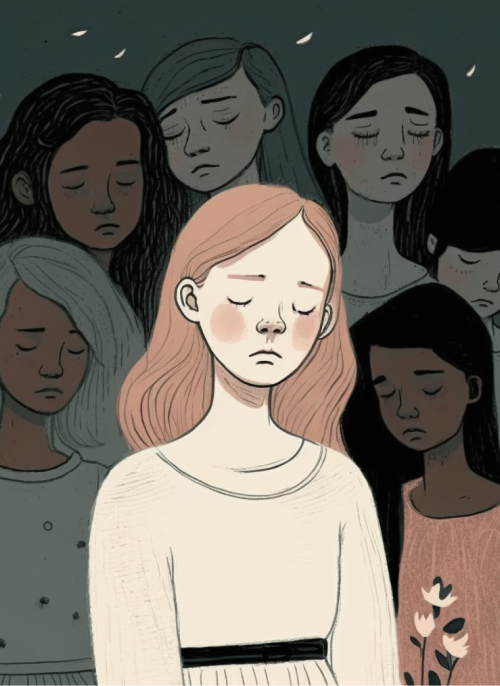As more and more people turn to the internet for communication, commerce, and social interaction, online violence are an ever growing concern. The anonymity and reach of the internet make it an attractive medium for those who wish to harm others, whether through fraud, cyberbullying, or more serious crimes. This guide presents the various forms of online violence, exploitation, and trafficking, and offer tips for staying safe and protecting yourself and others online.
Know the forms of violence that you may experience online
Digital harassment
Any threat, assault, including unwanted or inappropriate sexual advances and comments (sexual harassment). In the online space, this can take the form of receiving sexually explicit messages and images, or threats, and more subtle ways such as commenting on your appearance or making suggestive remarks. In some cases, it may involve sharing false information about people (defamation), for instance through video or photomontage. It can also include sharing explicit materials without your consent, or using sexually charged language and behaviour to intimidate or discriminate against you.

Doxxing
The act of publishing someone’s personal information online without their consent. When your personal information is published, you may be at risk of offline stalking, harassment, and even physical harm. In addition to the immediate risks that doxxing poses, it can also have long-term consequences. For example, your personal information may be spread across the internet, making it difficult to remove and potentially leading to ongoing harassment or abuse. Doxxing can be especially harmful for displaced people, as they may be at risk of persecution or violence if it is revealed.
Sexual violence
Any form of harassment, assault, threat, extortion or exploitation, of sexual character and/or with sexual purposes. Online sexual violence can take the form of receiving unsolicited sexual requests or images, sharing explicit images or videos of you without your consent or coercing you into sexual activity through threats, intimidation or manipulation.
Online sexual violence is unwanted, unsolicited, and aggressive. It has serious consequences for the victim, including psychological distress, physical harm, and damage to their social relations.

Grooming
The process of building an emotional connection in order to exploit or extort the victims. Online groomers may use social media or messaging platforms to establish trust with you, and then use this trust for manipulation and exploitation. As you are seeking connections and support in your new communities, you may be particularly vulnerable to grooming online.
Sextortion
A special a form of sexual violence that involves using sexual images or threats to extort something from the victim. Sextortion can take many forms, such as demanding money or other favours in exchange for not sharing explicit images or videos. It can also involve threatening to share images or information unless the victim performs certain sexual acts via a camera-enabled device or provides more images.
Hacking
Unauthorised access or manipulation of a computer and other electronic devices. It can be done for a variety of reasons, such as to steal personal information, get access to bank accounts, or to spread malicious softwares. Hacking can have serious consequences, including financial loss and loss of privacy. It can also lead to other forms of online violence, such as doxxing or cyberstalking.
Recognise if you are at risk of online violence
The use of enticing messages and manipulation is common. As a potential victim, it is important to be aware of the signs of exploitation and to take steps to protect yourself. These are some of the most frequent cases to look out for.
Someone may try to win your trust and affection by showering you with compliments and flattery (“you look beautiful, you look gorgeous, you look older”).
Someone may try to gather personal information about you by asking you questions that seem innocent but are actually designed to gather sensitive data (where do you go, your habits, which school).
Someone may try to make it harder to see what’s happening between you, by moving the conversation to a private chat or a different messaging platform.

Someone bringing up sexual topics early in the conversation or sending explicit messages or images, making it quite uncomfortable.
Someone asking about your sexual experiences or how you feel about doing certain sexual things.
Someone asking you not to tell anyone about your relation and conversation, especially your parents if you are a child/teen.
Someone trying to arrange a meeting with you in person, either alone or in secret.
Someone asking for explicit images or videos of yourself.
Someone you never met seems to have a lot in common with you or to already know things about you that you haven’t told them. If it seems like the person knows too much about you, they could be fetching that information from a variety of sources, such as monitoring your devices, accessing your online accounts, tracking your location, or gathering information that you gave out about yourself online.
Someone asking you to go on webcam, either to perform sexual acts or to reveal sensitive information. They may say their webcam is broken but that’s because they are not who they say they are.


Learn about how to stay safe and private online
Click here for practical tips and guides.
If you fall victim of online violence

If you are a victim of online violence, it is important to remember that this is not your fault. You have the right to feel safe and respected online, and it is not your responsibility to prevent or tolerate any form of abuse.

It is your choice how you respond to online violence. You may choose to report the incident to the appropriate authorities or to seek support from trusted individuals and organisations. It is important to remember that you have the right to make decisions that are best for you and to prioritise your own safety and well-being.

Always remember that you are not alone. Online violence is a serious issue, and there are resources available to help you. This includes hotlines, counselling services, and online communities of support. By seeking help, you can begin to heal from the experience of online violence and find ways to move forward.
What steps you should take next
First, it is important to stop all communications with the person or group who is perpetrating the violence. This can include blocking them on social media, and even changing your phone number or email address if necessary. See our guide for restricting communication on different platforms.

Next, don’t forget to document the abuse. Take screenshots of any threatening or harassing messages or images, and save all evidence that you have. Make a note of what is happening and keep a record of all communication, dates, and times. Do not delete anything, as this can be used to support your case. See a detailed guide on documenting below.

Speak to someone you trust about what is happening. This can provide you with emotional support, help you feel less isolated, and share the burden of your experience.. You may also want to consider reaching out to professional support. There are hotlines, counselling services, and other resources available to help you cope with the trauma of online violence and find ways to move forward.
Finally, consider reporting the harassment, threats, the sharing of inappropriate or unauthorised content, the abusive conduct or messaging you experienced directly or observed happening online to the appropriate authorities. This can include reporting it to the platform where it occurred, such as social media providers, or to law enforcement if the abuse has escalated. The partner organisations of UNHCR can help you in this process. By taking these steps, you can protect yourself and seek help to address the abuse.
How to document online harassment or abuse
For victims of online harassment, documenting incidents is essential for legal or disciplinary actions, as well as for personal validation and healing. If needed, follow these steps to document online harassment, abuse or any other type of exploitation.
Text Messages
Text messages can easily disappear from your phone, either accidentally or due to limited storage space. Capturing screenshots of the messages can ensure that the content is preserved even if the original message is deleted. It is also helpful to take a screenshot of the contact page, which can help to establish a link between the abusive messages and the phone number associated with the abuser.
Phone Number / Caller ID Impersonation
If you are receiving unwanted calls on your phone, it’s essential to take screenshots of the Caller ID, that provides important information about the source of the calls.
Be sure to include the date and time of the calls, as this information can be useful in building a case against the harasser.

Social Media / Internet
If you’re experiencing harassment or abuse on social media, it’s crucial to take a screenshot of the abusive content and save it to your computer or device. Additionally, some social media platforms provide alternative methods for documenting activity. For instance, Facebook’s “Download Your Information” feature enables you to download all your content and save it for future reference.
Make sure to document the harassment before reporting it to the platform provider, as it will be harder to get proof, when the content gets removed.
Emails
Emails contain IP addresses, which can provide valuable information about the sender’s identity. To preserve this information, it’s important not to delete the email or forward it to anyone else.
When saving email content, be sure to include the email header, which is where the IP information is stored. The header is often hidden and can be found in the email settings. Depending on the email platform you are using, such as Gmail, Outlook, or Yahoo! Mail, accessing the email header will vary.

